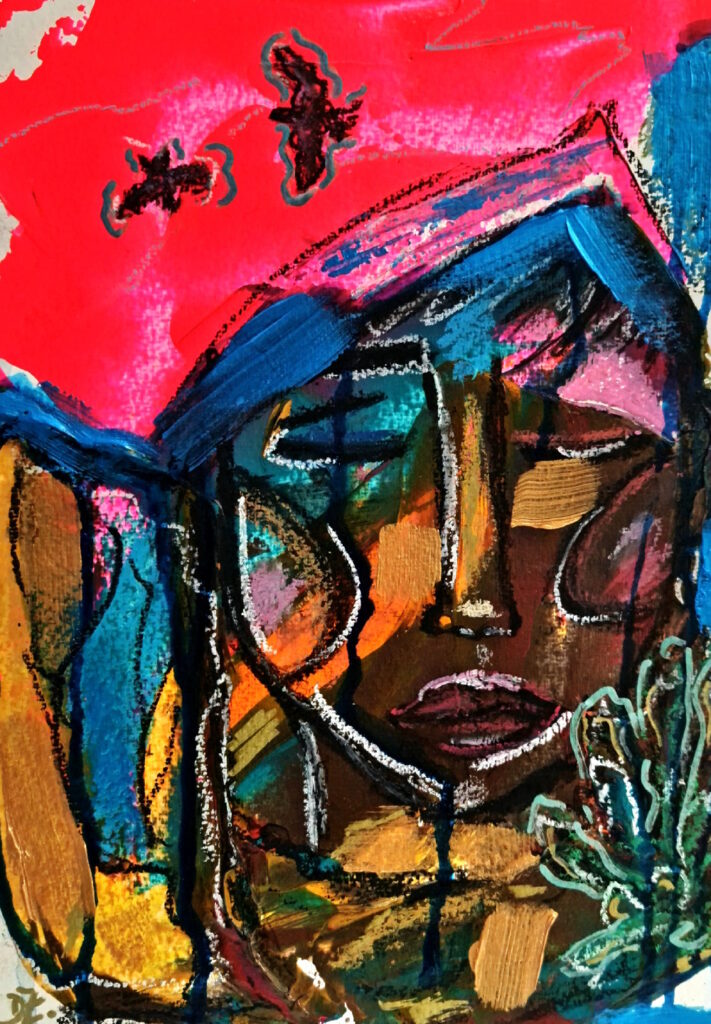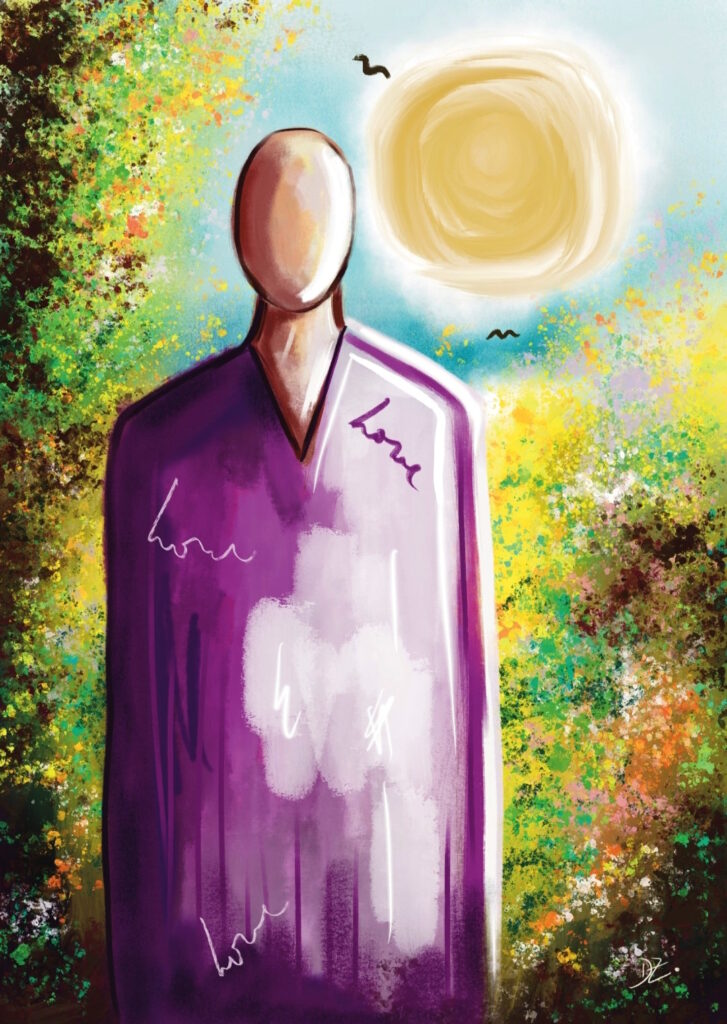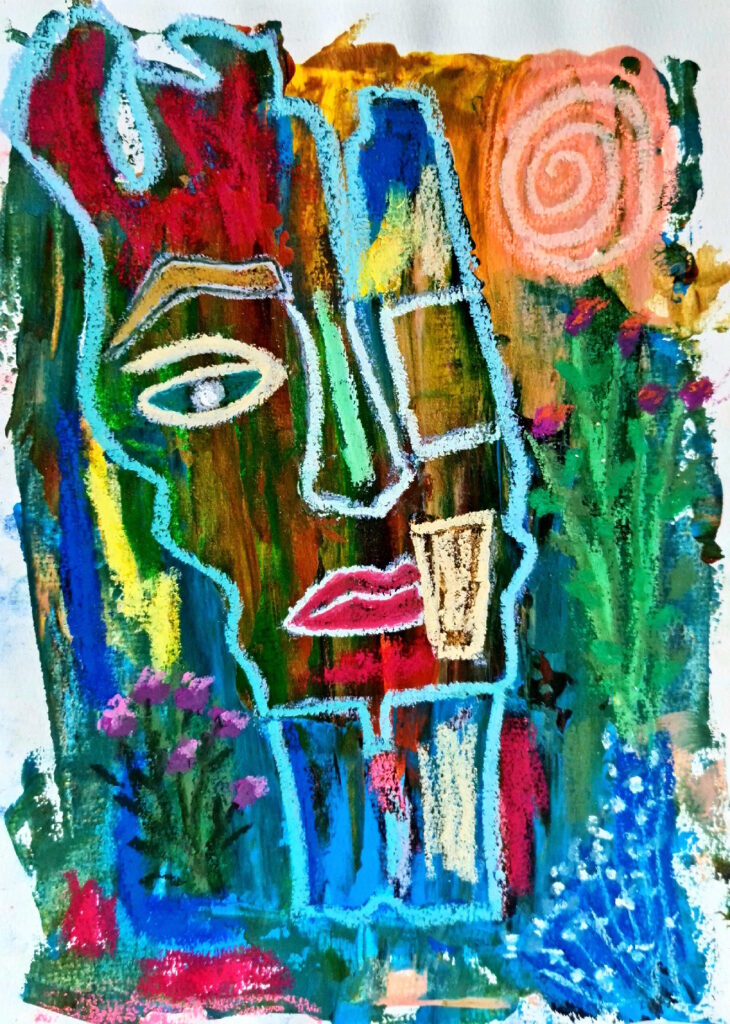Contemplation (2023) is a bold and expressive mixed-media work with chaotically layered textures. A figure seems to emerge from this layering just below the contrasting red—the figure looks as though it is reflecting on itself. This meditation is happening around what looks to be flora and birds, thus nature, which implies human relations to the natural world. The red area in the background in the top part of the artwork accentuates the birds flying around and the figure below.

The human figure has a rough texture, as the strokes of the paintbrush used by Zorzoliu are visible, which could imply that the human mind is frail. Potentially, this could be in relation to how some humans believe that they are above nature rather than with nature. Therefore, this presumption must be removed when meditating with nature, and one must see oneself as a part of nature.

Love (2025) captures the viewer’s eye directly as the figure centred within the work stares at us- though the figure does not have any identity or face, which allows the viewer to become the figure. This faceless figure could represent how all humans need love. The sun in the background adds warmer lighting to the work, giving the painting warmth and the feeling that love may close. The greenery in the background impounds life onto the digital painting, whilst the figure has discernible writing of ‘love’ on their clothing. This could imply that the figure is a personification of love rather than representing humans, as mentioned previously.
The light from the sun seems to diffuse into the clothing, highlighting this figure to the viewer. The vibrant colours give life to the scene, implying that the search for love can be lonely, but we do not need to isolate ourselves from the natural world. However, the work’s title is ironic as the artwork seems to reflect that the figure lacks love rather than having it. Even so, the figure seems to be in a meditative pose around the natural environment, which could imply that love is within us and can be found through self-reflection.

Forgotten (2023) imprints a human face onto the tree trunk in an abstract style- the colours seem to show a mood which is shifting between oppression and anger (the reds looking as though the tree is bleeding), and the warmer colours of greens and yellows giving a feeling of rebirth and growth. The face itself could represent the connection between humans and nature despite its distorted appearance, such as the absence of an eye. This brokenness of the face represents the forgotten tree and humanises the tree so that the viewer is invited to explore the trunk’s abandonment from its root.
Solitude, as explored here, is not simply a form of being abandoned or lonely but rather a space to regenerate and regrow. The tree trunk has been severed from the root, yet it is surrounded by thriving life, reminding the tree that it can rediscover itself. The spiral sun looks to add warmth to the work while also potentially adding light to the tree’s loneliness, giving the viewer an understanding that when in loss- there is always a way to build yourself back up, even in solitude.
Overall, Contemplation (2023), Love (2025), and Forgotten (2023) successfully connect solitude with nature and human emotion. The works are all brightly coloured and show that despite solitude being considered a part of loneliness, it gives way to contemplation and regeneration. The works themselves, outside of this theme, are well composed and guide the viewer towards the figures within the work, thus showcasing the stories explored.
